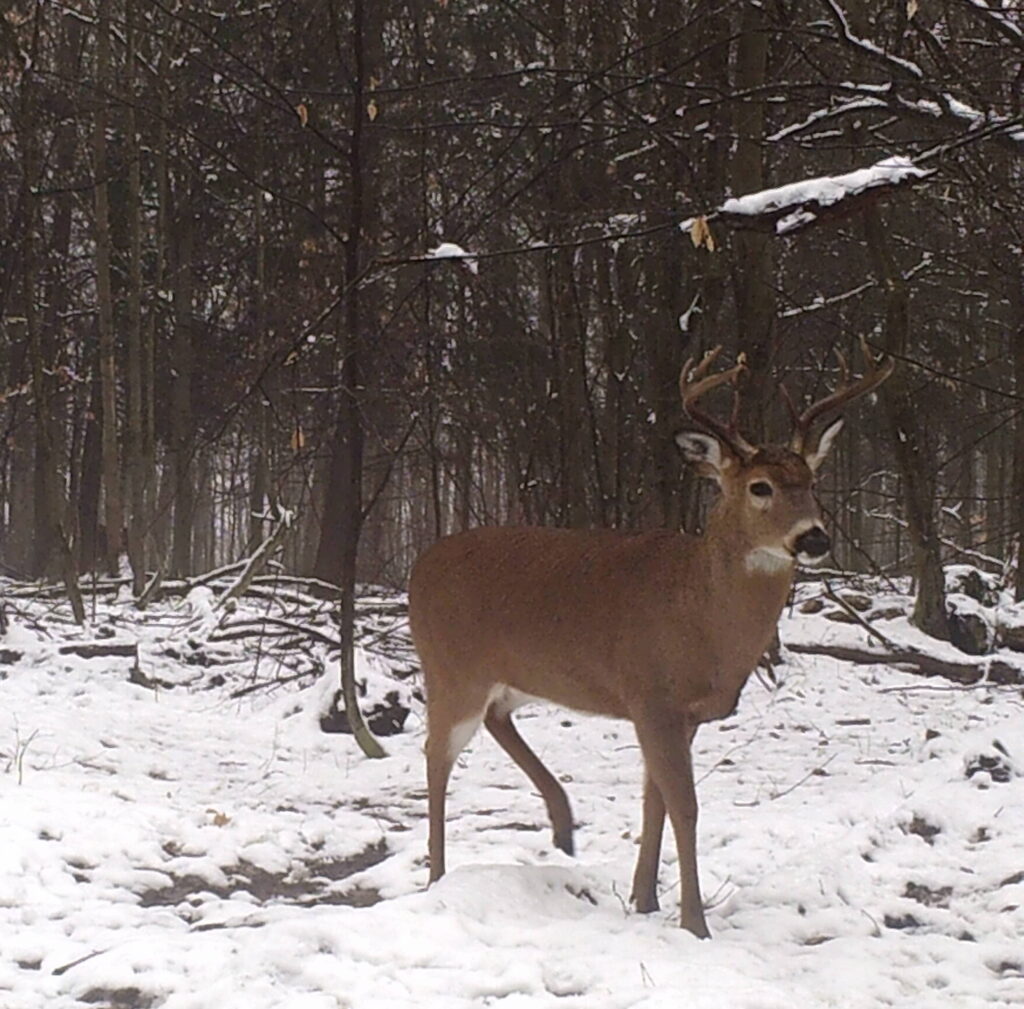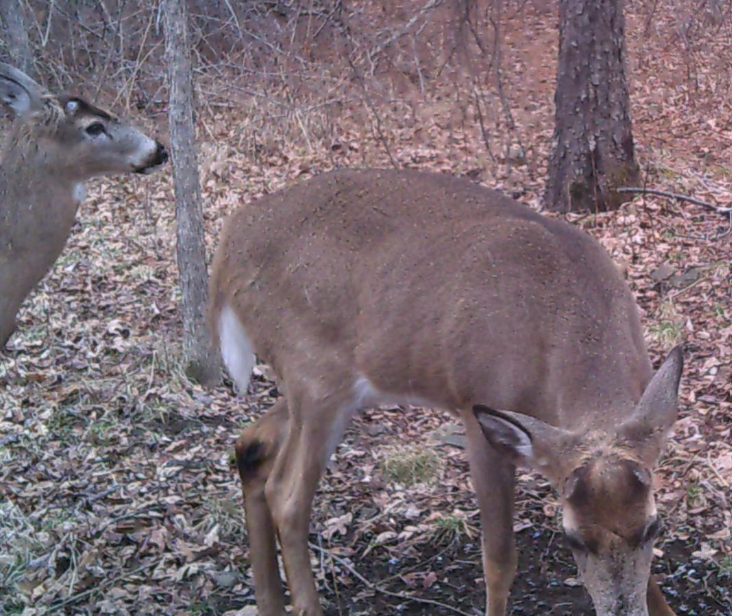Antlers are fascinating and hold a mysterious attraction
By Oak Duke,
Like the timing of other whitetail behaviors, from shedding velvet to the timing of the Rut, when bucks drop or cast their antlers is variable and depends on the individual.
No set time to it.
I have found shed antlers in December, January, February…throughout the springtime months.
And have photos of bucks still carrying antlers through March!

So it would appear that the timing of when antlers are being dropped is an individual thing, depending upon circumstances for each specific animal.
I remember seeing a buck shed an antler, the only time I experienced it, first hand.
During the end, the last weekend of muzzleloader season a few years back, I stalked a big eight-point in the middle of a cut cornfield.
I was decked out in snow-camo and carefully crawled, using the edge of a drainage ditch for cover.
As happens in late December, daylight was fading fast and the only time I could move on him was when he would put his head down to feed, pushing away snow to glean kernels off missed corncobs.
Every few moments, he would jerk his head up and look around.
He was quite safe as the open, snowy, windswept field was empty, completely barren for a couple hundred yards in each direction and he was in the center, hidden from any road or human being.
Just before the end of shooting light, I had finally edged close enough for a good shot, slowly came into a sitting position when the strangest thing happened.
The buck shook his head violently, like a dog shaking off water, and the right side of his antlers flew, arced through the air at least 20 feet.
The buck stood there with one antler.
I sat there in the snow, stunned, and put the black powder gun down.
When the antler flew, so did my desire to shoot the buck.
Would the other one fall off too?
Must have been a crosscurrent wind, something, maybe my movement. The buck knew I was there, snorted and instantly bounded away white tail straight up, one-antlered.
Light was going fast. I didn’t find the antler that night, but the next morning after a long search, after finally walking a grid pattern, I did.
Antlers are fascinating and hold a mysterious attraction.
To us they are prized as trophies, used as medicine, and fashioned into art and implements from lamps to knife handles, buckles and buttons.
Researchers use them in the study of bone diseases like cancer.
But to deer they are really a secondary sex characteristic. Antlers attract mates and are all-important in the battle for breeding rights.
Antlers are bone, alive when growing and once their velvet covering comes off in September, essentially just dead bone, becoming mineralized.

And they are not horns, though we often call them as such. Antlers are solid bone, no marrow, like other bones, while horns which are closer to our fingernails in composition, are hollow.
The deer family of Ungulates is the only group of critters that grow antlers, termed Cervidae or Cervids.
Antlers grow from a pedicle, kind of a circular growth on top of a buck’s (or even rarely a doe’s) head.
The growth and shedding of velvet, and finally the casting or dropping of the deer’s antler is dependent upon hormones and pheromones, including measurable testosterone and melatonin and the interaction of various glands including the testes and pineal gland, sensitive to changing amounts of light from the sun and the moon (which of course is reflected sunlight.)
As the antler grows from the pedicle in the springtime, it’s fed by blood vessels in the skin covering the pedicle, and velvet, during the growing stage is packed with blood and capillaries, in a way modified, dark, stretchy skin.
As the Autumn equinox approaches in mid-September, full mineralization and velvet shedding is about done. The blood vessels dry up and are even noticeable on some antlers as long straight channels, especially near the bases above the pedicle.
But when deer drop their antlers is also dependent upon hormones and pheromones, the actual mix of bucks (competition for breeding rights, scrapes and rub behavior, scent marking,) and estrus cycles of does.
Late cycling does seem to keep bucks rutting sometimes through January and even into February now, here in the Northern latitudes.
Only when the buck’s testosterone levels drop, so do his antlers.

Oak Duke/ Wellsville, NY/ February 2024
Facebook pages:
Whitetail Page: www.facebook.com/Oak.Duke.whitetail.page
Duke’s Honey: www.facebook.com/Dukes-Honey-513590015445371/







